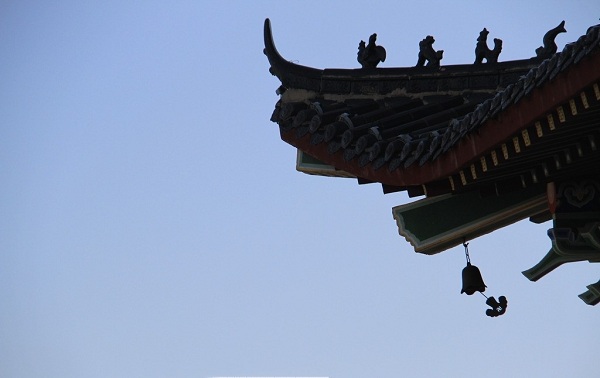- Call Us :+86 13663796880
- Email :nicole@sfrooftile.com
- Working hours :24 hours a day
- Language :Chinese
Nicole Zhang
+86 13663796880
+86-379-63262958
nicole@sfrooftile.com
Under the eaves of some traditional ancient buildings in China, such as temples, you can always see this series of bells hanging. The wind blows and the bell moves, which is sweet and crisp.
This kind of bell in the corner of the temple is called "wind bell", also known as bird alarm bell and flower protection bell. As the name implies, it means that when the wind blows, the wind bell rings to scare birds and protect the flowers and plants in the corridor.

In ancient times, the wind chime was also called "Iron Horse" and "Duo" in ancient times. It originated from divination in ancient China. Some people also used it to judge the wind direction. It is usually made of "gold, copper, iron" and other metals.
The origin of "Lingduo" is generally believed to have originated in India. After Buddhism was introduced into China from India, Duo was hung on the eaves of temples and pagodas to become wind chimes.

The "wind chime" hanging from the eaves corner of ancient Chinese buildings has the following main functions:
1. The function of blessing and exorcism. Lingduo is an important magic tool in Buddhism, which is usually engraved with scriptures or incantations with the intention of praying or exorcising evil spirits.
2. The function of expelling birds. The roofs of ancient buildings are made of wood, especially the brackets. There will be many gaps. The sound of wind blows away the birds to prevent them from making nests and polluting their feces.
3. Decorative function. The eaves corner of the ancient building is raised high, and a wind bell is hung below it, which makes a pleasant sound when swaying in the wind. The sound is not only beautiful, but also embellishes the ancient building, adding a sense of movement to the motionless building.
